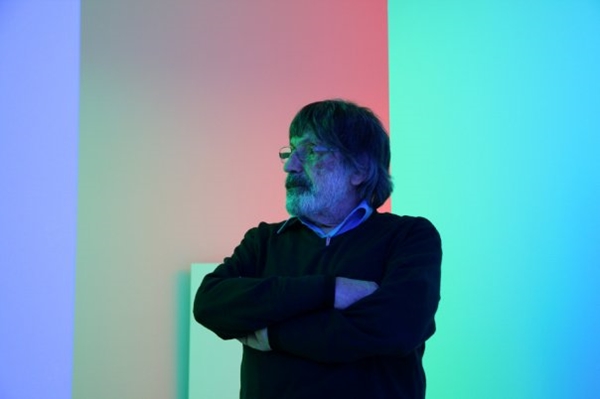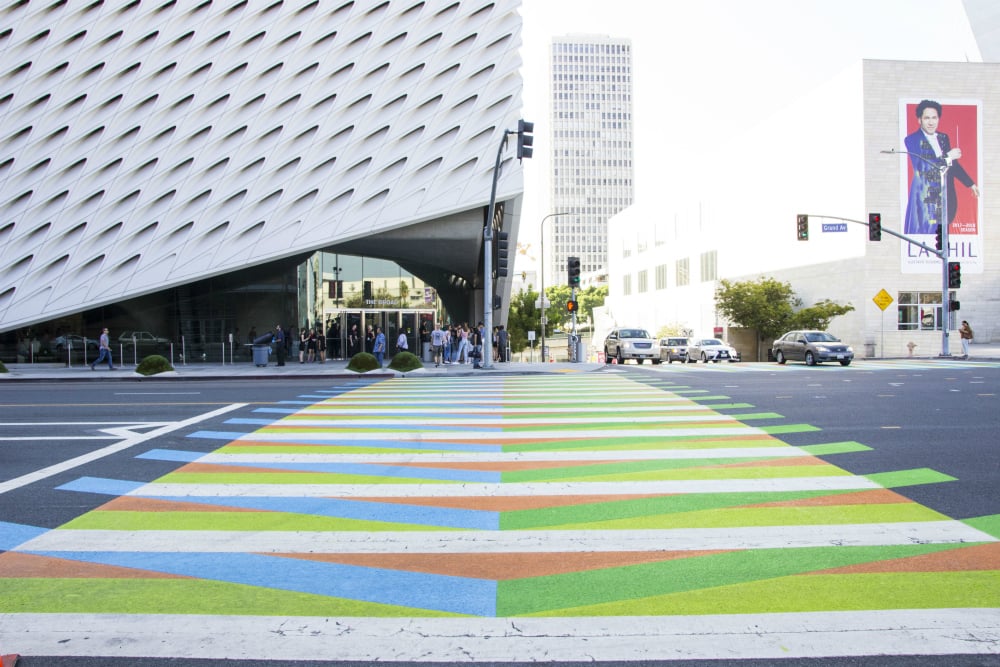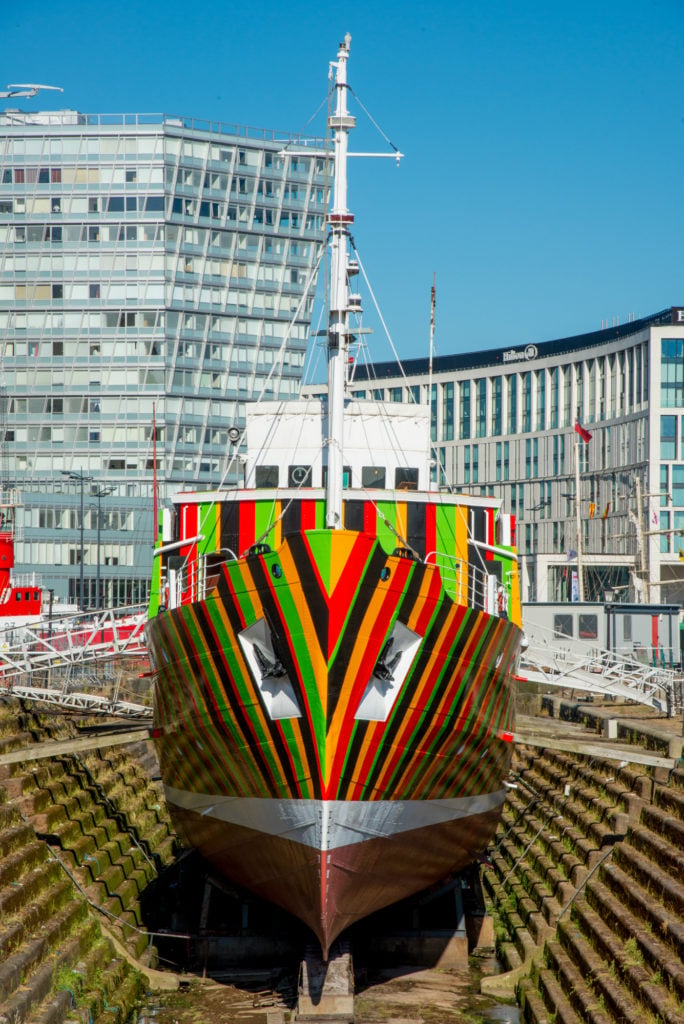People
Carlos Cruz-Diez, a Venezuelan Trailblazer of Kinetic and Op Art, Has Died at Age 95
The artist was known for his mind-bending use of bright, neon colors.

The artist was known for his mind-bending use of bright, neon colors.

Sarah Cascone

Kinetic and Op art pioneer Carlos Cruz-Diez has died in Paris at the age of 95. One of Latin America’s best-known artists of the second half of the 20th century, Cruz-Diez worked with bright layers of colors, ranging from two-dimensional works that seem to leap off the page to immersive “Chromosaturations” installations of hyper-saturated projections of neon lights.
News of the Venezuelan artist’s death was announced on his foundation’s website. “Your love, your joy, your teachings, and your colors, will remain forever in our hearts,” his family said in a statement.
Born in Caracas in 1923, Cruz-Diez studied at the Escuela de Artes Plásticas y Aplicadas there from 1940 to 1945. He worked as an illustrator before being hired in 1946 as creative director of the Venezuela branch of McCann-Erickson, the American advertising agency. Cruz-Diez moved to Europe in 1955, ultimately settling in Paris, where he lived from 1960 until his death.
Inspired to break free from academic traditions, Cruz-Diez made a breakthrough with a simple work he created in 1959. He realized that two off-kilter red and green lines on a black background produced the optical illusion of a third yellow line. Working with colored strips of plastic on cardboard, and later more durable aluminum, Cruz-Diez dedicated himself to making work that would change in appearance based on the position of the viewer, shifting based on light and position.
He was featured in the groundbreaking 1965 exhibition “The Responsive Eye” at the Museum of Modern Art in New York, which captivated viewers—but divided critics—with his dizzying illusions of motion. Cruz-Diez’s work in that show, Physichromie Number 116 (1964), appeared alongside works by artists including Josef Albers, Larry Bell, Ellsworth Kelly, Robert Irwin, Agnes Martin, Bridget Riley, and Frank Stella.
“In his approach to color and his desire to release color from the confines of form, he infused it with a poetry that allowed us to see the world with new eyes,” the artist’s longtime dealer Leon Tovar told ARTnews. “Cruz-Diez’s artwork wasn’t limited to any gallery, to any museum, or even to art history—it gave us lessons to use in our everyday lives. As one of the last of the pioneering kinetic and optical artists, such a breakthrough is part of his enduring legacy.”

Carlos Cruz-Diez’s crosswalk commissioned by the Broad for “Pacific Standard Time: LA/LA” (2017). Photo courtesy of the Broad, Los Angeles.
Cruz-Diez won the 1967 international painting prize at the São Paulo Biennial and went on to represent Venezuela at the Venice Biennale in 1970. He also created site-specific public artworks around the world, including for the Simón Bolivar airport in Caracas, Madrid’s Parque Juan Carlos I, and the Marlins stadium in Miami.
Although Cruz-Diez was never as recognized in the US or Europe as he was in South America, his historic contributions to Op Art, and the role that other Latin American artists played in the movement, were revisited in the 2016 exhibition “The Illusive Eye” at New York’s El Museo del Barrio. Cruz-Diez’s works can be found in the collections of institutions including MoMA and Tate Modern.

Carlos Cruz Diez, Induction Chromatique à Double Fréquence pour l’Edmund Gardner Ship (2014), a dazzle ship made for the Liverpool Biennial. Photo by Mark McNulty, courtesy of 14-18 Now.
More recent projects include a dazzle ship he made as part of a centenary art project from 14–18 Now during the 2014 Liverpool Biennial, and a permanent window installation that casts colored shadows across the lobby of a Washington, DC, law firm—Cruz-Diez’s largest-ever North American project. In 2017, the artist was commissioned to paint a crosswalk outside the Broad museum in Los Angeles as part of “Pacific Standard Time: LA/LA,” a series of Latin American art exhibitions held at institutions across the city.
“I always thought art shouldn’t be isolated from society, art is a way of communication. It shouldn’t be closed within four walls,” Cruz-Diez once told the Associated Press. “So I always liked to get in the street, do it in the best way, be sincere, and offer it to everyone.”